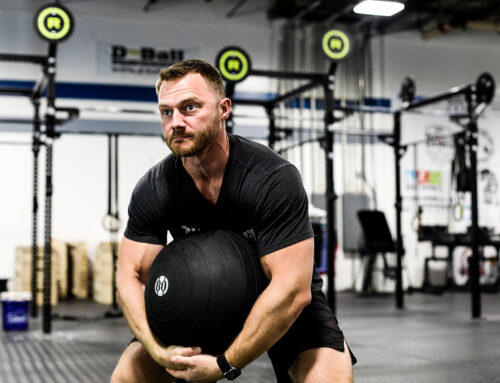Becoming more explosive is one of the most sought-after training goals of elite athletes. Whether coming off the line, swinging a bat, racket, or club, throwing a ball, or getting to the rim, athletes need to develop their fast-twitch potential while improving sport-specific skills. For hundreds, if not thousands of years, medicine balls, like the D-Ball, have been the most effective training tools for accomplishing these goals. However, coaches often have a hard time knowing what weight to prescribe to maximize athletic potential. One way Strength and Conditioning Coaches accomplish this is by applying the Principle of Overload in their programming..
The Principle of Overload is a fundamental concept in exercise science and training that states that to improve physical fitness, strength, or performance, the body must be subjected to a level of stress or demand greater than it is accustomed to. This increased demand forces the body to adapt, leading to improvements in muscle strength, endurance, or other physiological capacities. The overload can be applied by increasing the intensity, duration, frequency, or type of exercise.
For example, to build muscle strength, you might gradually increase the weight lifted, the number of repetitions, or the frequency of workouts. The key is to progressively challenge the body beyond its current capabilities while allowing adequate recovery to prevent injury. (1)
There are exercises where the goal is to create strength adaptations. But, when the goal is to train the athlete to move faster or more explosively, exercises that only slightly overload the movement must be part of the routine to target the faster Type IIa and IIx muscle fibers. This also has huge benefits for increasing the athlete’s neural drive, while increasing their awareness of what moving fast under control feels like.
If the medicine ball is too heavy, it becomes primarily a strength-based movement, and the body will preserve the IIx fibers for when they’re truly needed, e.g., running from a bear. Also, there’s a significant risk in overloading a sport-specific pattern, as the heavier load could distort the sequencing and lead to a faulty movement pattern, or even result in injury.
As you will see in this example, I perform the one-arm chest pass with a 9” 20lb D-ball and a 9” 4lb D-ball. I move significantly slower with the 20lb ball. While there is still a strength and activation benefit, I’m at a huge disadvantage for training my explosive fast-twitch fibers. I’m also limited to the amount of volume I can perform.
The 4lb D-ball allows me to move explosively, applying maximal force while not distorting the movement pattern. I have better sequencing and mechanics.
Application:
Studies point to the benefits of combining both a heavy ball and a light ball to maximize athletic performance. PAP (Postactivation Potentiation) training can directly impact ballistic performance. Studies by NSCA and ACSM show that performing a heavy resistance exercise to increase neural activation, muscle fiber recruitment, and rate of force production, before a subsequent explosive movement, will enhance performance.
“The NSCA article titled “How to Utilize Contrast Training for Strength, Power, and Performance” defines contrast training as pairing a heavy strength exercise (e.g., heavy squat at 85-90% of 1RM) with a lighter, explosive movement (e.g., bodyweight jump or plyometric) to exploit PAP. The heavy exercise activates high-threshold motor units, priming the muscles for greater force production in the subsequent explosive task.” (2)
To create explosive athletes and maximize athletic performance, combining both heavier and lighter D-Balls will give you the greatest training effect. Groove the pattern with a lighter ball first, teaching the athlete proper mechanics as they warm up. Then, ideally perform 3-5 repetitions with the heavier d-ball (12-20lbs), immediately followed by 5-10 repetitions with the lighter d-ball (4-6lbs). Rest for 60s and repeat for 3-4 rounds.
- American College of Sports Medicine. (2021). ACSM’s Guidelines for Exercise Testing and Prescription (10th ed.). Wolters Kluwer.
- Wall, L. A. (2021). How to utilize contrast training for strength, power, and performance. Strength and Conditioning Journal, 43(3), 1-8. National Strength and Conditioning Association. https://www.nsca.com/education/articles/




